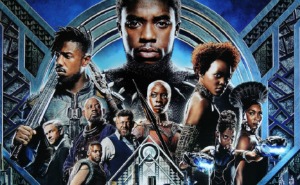 The hype around Black Panther has been as exaggerated as any feat one of its characters might have performed, with the film being universally praised for a layered plot and what has been described as an Afrofuturist cast. A Wrinkle in Time is sure to follow in its footsteps as a blockbuster sporting an interracial cast.
The hype around Black Panther has been as exaggerated as any feat one of its characters might have performed, with the film being universally praised for a layered plot and what has been described as an Afrofuturist cast. A Wrinkle in Time is sure to follow in its footsteps as a blockbuster sporting an interracial cast.
Other than the money and awards movies like these are going to amass, what they have made evident is that children want a universe that is diverse in terms of media images, and, for the longest time, they haven’t had one.
There Has Been Some Progress
In the same way that NZD online casino entertainment has become more and more available to an ever-wider array of different people, the time has come to make sure that the disparity between male and female characters and white and non-white characters is addressed.
Research has consistently shown that the animated worlds that children see on their televisions are not in sync with the real environments they find themselves in. A study undertaken over the past seven years at the Children’s Television Project, CTV, at Tufts University has been documenting images of different ethnicities, gender, and races in the most popular children’s series.
The good news is that things are more diverse than they used to be, with female characters making for just less than a third of all characters. While this may seem discouraging, it takes on a new light when you compare it to the 1:6 ratio that was previously found, in the 1970s, and the ratio of 1:4 that was found as recently as the 1990s.
Jump with me to read more.
More Racial and Ethnic Diversity Too
Black characters account for 5.6% of the total sample of 1 500 characters, and there are more Asian/Asian-American characters than previously as well, at 11.6%.
Stereotyping is Still an Issue
Unfortunately stereotypes persist and perspectives don’t change fast, both in how the characters are drawn and how they speak, with the villains mainly using non-American dialects and accents. This is evident in characters like Nightmare Moon on My Little Pony: Friendship is Magic and Dr Doofenshmirtz from Phineas and Ferb.
When interviewing writers, directors, and voice actors in an attempt to understand why this kind of stereotyping is still in evidence, it seems that economic pressures are compelling the creators of animated programming aimed at children to rely on stereotypes as a sort of shorthand.
For example, one director stated that if something has worked in the past, there is a huge tendency to use it again, even if that something is vaguely offensive stereotype! An African-American voice actor also reported that he was frequently told when auditioning that he should sound more urban – a code word for the clichéd African-American dialect.
Kids are Quick to Judge
Many studies have shown why it is important for kids to see characters who not only look like they do, and resemble their families, but sound like they do as well.
There is definitely a relationship between lower self-esteem and consistently negative media portrayals of particular groups of people. Other studies have also shown that the media misrepresenting ethnic groups can cause confusion in kids about aspects of their own identities.


